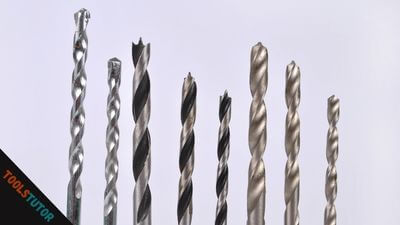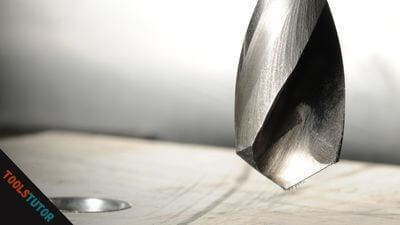Ceramic pots make beautiful and long-lasting homes for your plants, but you may be wondering if it’s possible to drill holes in them. Whether you’re looking to add a drainage hole to a planter or want to hang a pot from a ceiling hook, drilling a hole in ceramic can seem like a daunting task. But with the right tools and a little patience, it’s actually quite easy. In this article, we will give you a step-by-step guide on how to drill a hole in a ceramic pot.
Different types of drill bit to use for a ceramic pot
There are three main types of drill bits that can be used to drill through ceramic pots – masonry bits, carbide-tipped bits, and diamond-tipped bits.
Masonry bits are the most common type of drill bit and are made from hardened steel. They are very durable and can be used on a variety of materials, including ceramic pots.
Carbide-tipped bits are made from a harder material than masonry bits and are designed specifically for drilling through hard materials like ceramic pots.
Diamond-tipped bits are the most expensive type of drill bit but are also the most effective at drilling through ceramic pots.
- Read this article to find the best drill bits for drilling into ceramic pots.
Necessary tools to drill a hole in a ceramic pot
To drill a hole in a ceramic pot, you will need:
- A drill
- Drill bit
- A piece of scrap wood ( to place it over the pilot hole)
- A hammer (to gently tap the chisel into the scrap wood)
- A chisel
- A sharp knife
- Safety goggles
Drilling a hole in a ceramic cup
Step 1 – Choose the right drill bit
When it comes to drilling a ceramic pot, it is important to use the right drill bit in order to avoid damaging the pot. Here are a few tips on how to choose the right drill bit for the job:
First, you will need to determine the size of the hole that you need to drill. The size of the hole will determine the size of the drill bit that you will need to use.
Once you know the size of the hole, you can then select a drill bit that is slightly smaller. This will help to prevent the drill bit from slipping and potentially damaging the pot.

Step 2 – Wet the pot
When drilling a ceramic pot, it is important to wet the pot first. This will help to prevent the pot from cracking. To wet the pot for drilling a ceramic pot or submerge the pot in clean water. As you drill, the water will help to lubricate the bit and keep the pot from overheating.
Step 3 – Make a pilot hole
Now it’s time to make a pilot hole. This will help to prevent the drill bit from slipping and potentially damaging the pot. To make a pilot hole, simply use a small drill bit to create a hole in the center of the pot where you want to make your larger hole. Once the pilot hole is created, you can then use a larger drill bit to create the hole to the desired size.

Step 4 – Drill carefully
After the pilot hole is created, put the larger drill bit on the smaller pilot hole on the pot and start drilling. Apply even pressure as you drill. Go slowly at first, and then increase speed as needed. Keep the drill bit lubricated with water to prevent it from overheating. When you have finished drilling, use a wet rag to clean up any debris. Once the hole is drilled, remove the drill bit and pot from the surface.
This is all about my way of drilling a ceramic pot. However, you may also follow the below video that I have found helpful.
How to make a hole in a ceramic pot without a drill
If you need to make a hole in a ceramic pot but don’t have a drill, don’t worry – it’s actually quite easy to do. Here’s how:
- Start by using a sharp pencil or pen to trace the outline of the hole you need to make.
- Next, use a hammer to gently tap around the pencil line. Be sure to use a light touch, as you don’t want to crack or break the pot.
- Once you’ve gone all the way around the pencil line, use a sharp knife to score a line along the inside of the hole.
- Now, use a pair of pliers to slowly and carefully break away the scored piece of ceramic.
- Apply pressure to the pliers and slowly twist them to create the hole.
- Continue twisting the pliers until the hole is the desired size.
- Remove the pliers and inspect the hole. If necessary, use a file or sandpaper to smooth any rough edges.
FAQ
How to drill a hole in ceramic plate?
If you need to drill a hole in a ceramic plate, there are a few things you’ll need to do to ensure a clean, successful result. First, use a sharp, carbide-tipped drill bit – avoid using a steel drill bit, as it will likely crack the plate.
After that, use a slow speed and plenty of lubrication (water is fine) to keep the bit from overheating – this is especially important when drilling through thicker plates. Finally, be patient and go slowly – if the drill bit starts to wander, STOP and reposition it before continuing.
How to drill a hole in ceramic vase?
If you need to drill a hole in a ceramic vase, there are a few things you’ll need to do to ensure a clean, professional-looking result. First, use a sharp, carbide-tipped drill bit that’s slightly smaller than the desired hole size. Second, attach the vase to a sturdy work surface using painters’ tape or clamps. This will help to prevent the vase from cracking or breaking as you drill.
Third, drill slowly and evenly, applying moderate pressure. Start by making a pilot hole, then gradually increase the size of the hole until it’s the desired size. Finally, remove any sharp edges from the hole with a file or sandpaper.
How many drainage holes in large pots?
It is recommended that large pots have at least four drainage holes to ensure proper drainage and avoid waterlogged soil. Larger pots may need more drainage holes to accommodate the increased volume of soil and water.
Can you drill a drainage hole in clay with a screw?
When it comes to drilling holes in clay pots, you may be wondering if a screw can get the job done. While it is possible to drill a drainage hole in clay with a screw, it is not the ideal tool for the job. Screws are more likely to crack the clay pot, so it is best to use a drill bit designed specifically for drilling through ceramic materials.
Why do you need drainage hole in ceramic pots?
Drainage holes are an important part of any ceramic pot. Without proper drainage, water can become trapped in the pot, leading to a number of problems. Over time, this can cause the pot to crack or break, and can also lead to root rot in your plants. Proper drainage ensures that your plants stay healthy and your pot lasts for years to come.
Conclusion
I hope the article helps drill properly into your ceramic pots for drainage. If you have any scrap ceramic, then you may practice drilling into it to gather some experience. Follow the instructions so that you make the hole properly and do not damage your pot.